- Register
- Log in to Tune-In
- Wishlist (0)
-
Shopping cart
(0)
You have no items in your shopping cart.
Beatles News

Calexico has released a cover of John Lennon and Yoko Ono’s Christmas classic, “Happy Xmas (War is Over).” The Tuscon, Arizona-based indie rock band featured the song on their latest holiday album, Seasonal Shift.
“I love this song and I love the universality of the lyrics and the call and response sea of voices,” vocalist and guitarist Joey Burns said in a press release. “I decided to start as quiet as possible and find out how loud and massive we could make this song build.”
The band gave a slight southwestern-twist to the original tune, which was released along with an animated lyric video. The video shows pieces of paper drifting across the screen with animated drawings of the band performing the song along with scenes of the desert. In their version, they draw out the chorus, singing the line “War is over if you want it,” several more times than the original.
“We decided to not stop as the original had and see what would happen if we kept the trance and mantra going. This is something that we would do live onstage a lot and felt really good to try it at home in our makeshift studios scattered around the globe,” Burns said.
Sou details
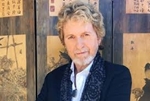
On this episode of Everything Fab Four: The Hall of Famer talks his Beatles journey, from revelation to revolution
British singer-songwriter Jon Anderson recently joined host Kenneth Womack to discuss "being spurred on to do better music" by the Beatles on "Everything Fab Four," a new podcast co-produced by me and Womack, a music scholar who also writes about pop music for Salon, and distributed by Salon.
Rock and Roll Hall of Famer Anderson, co-founder and former lead singer of the legendary prog rock group Yes, has enjoyed a prolific career spanning over six decades, most recently with his 2019 album "1000 Hands." Though he had a band with his brother as a teen in 1962, they were largely focused on being the Everly Brothers or Elvis Presley — that is, until they heard "Love Me Do."
Source: Nicole Michael/salon.com
details
As the COVID-19 pandemic continues, most of us are likely planning a laid-back Christmas celebration. And Paul McCartney is no different.
"I'm going to stay at home," the Beatles legend declared during a Reddit AMA session fan Q&A earlier this week, adding "and yes I'll be eating far too much with my family!"
Regarding his brand-new album, McCartney III, Paul reveals what his and his wife Nancy's favorite songs are on the record. He says of his favorite, "Always difficult to say as they change, but at the moment it's 'Deep Deep Feeling.'" As for Nancy's, it's "The Kiss of Venus."
McCartney also reports that "The Kiss of Venus," "Slidin'" and "Find My Way" are the songs from the new album he thinks would be fun to play live.
Reflecting on the making of "The Kiss of Venus," Paul notes that it "was interesting because that was a song I had to play straight on acoustic guitar. It was fun to do and I was happy with how it turned out."
Source: ABC Radio News
details
With 2020 just days away from coming to an end — finally — it’s time to look ahead to 2021. In a recent end-of-the-year recap video shared by Ringo Starr summing up what he’s been up to the past eleven-plus months, the famed Beatles icon urges us all to have a “Merry Christmas and Happy New Year … Or, a different New Year,” no doubt a statement about the tough times that 2020 forced upon us all.
The clip also features in-studio footage of Ringo and pals Paul McCartney, Steve Lukather, Joe Walsh and others recording their parts for “Here’s to the Nights,” Ringo’s new song written by Diane Warren that was shared recently.
The wistful song, part of an EP Ringo will release in early 2021, has a theme of unity and togetherness, folks coming together for a mutual cause:
Source: Rock Cellar Magazine Staff/rockcellarmagazine.com
details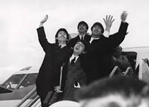
My father, Alan Smyth, was a viola player. When I was young, in the 1980s, he mentioned a couple of times that he’d played with the Beatles. He wasn’t very interested in them; growing up, I wasn’t either. Years later, now that I’ve become very interested in them, I think often about his casual aside.
My dad died in 2002. In early 2020 I made contact with his musician friends to ask if they had any memories of his playing with the Beatles. John Underwood, the viola player in the Delmé String Quartet, played on ‘Eleanor Rigby’ in April 1966, on ‘A Day in the Life’ in February 1967, and on ‘She’s Leaving Home’ in March 1967. John said my father didn’t play on these songs, and he couldn’t remember if he played on others.
Source: Adam Smyth/lrb.co.uk
details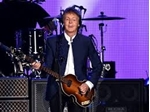
Beatles musician Ringo Starr has spoken out about not being able to join his family in the UK for Christmas due to the pandemic, saying he feels "miserable" but will "get on" with it.
The 80-year-old is based in Los Angeles with wife Barbara Bach and, like millions of others, will be unable to physically see his children and grandchildren over the festive period.
The father-of-three said: "I'm not in England, I should be in England. I go for Christmas with the kids and my grandkids and that’s not happening.
"So I had a few days of being miserable about that. And then you’ve got to get on.
You just got to get up again and say, 'well, let’s see what we can do today’. It’s no good sitting there being miserable for a long time, just odd moments."
Source: rte.ie
details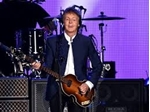
Paul McCartney, like most people, has a favorite Beatles song, and it’s a surprising one.
In a new appearance on The Zane Lowe Show, Sir Paul says the Beatles song he’s listened to the most is “Let It Be,” but his favorite is “You Know My Name (Look Up the Number),” which is the b-side to “Let It Be.”
RELATED: Paul McCartney Teases Documentary Series with Rick Rubin
Macca calls the song “a zany, zany little B-side that nobody knows, but we had such fun making it.”
“It’s like a little comedy record. And I just remember the joy of making it,” said McCartney. “…But there’s a lot of songs that I love of the Beatles. I think ‘Strawberry Fields’ is a great song; I think ‘Hey Jude’ worked out great. I’ve got a lot of favorite songs. ‘Blackbird’ I love. ‘Eleanor Rigby’ I love.”
Source: Erica Banas/wror.com
details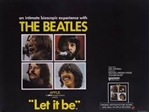
In the 50 years since the Beatles split, seemingly every known scrap of their history has been scrutinized and curated for public consumption — every minute of studio tape, every radio broadcast, home and concert recording; every photo and interview and document and snippet of film footage — with one huge exception: the “Let It Be” film.
There are several reasons for this, but only one matters: “Let It Be” is a downer. We see our beloved Beatles breaking up before our eyes.
Originally intended as a spontaneous, “as live as live can be, in this electronic age” documentary of rock as it happens, instead we see the group, who had finished recording the 30-song “White Album” just six weeks earlier, miserably trying to have a jolly ol’ time working up even more tunes for the cameras — in the morning, in a dark and cavernous film studio, during a typically gloomy English winter. We see Paul and George arguing, John and Yoko wafting in from a heroin haze, and Paul trying to liven the tepid sessions by taking the helm — instead he comes off dictatorial — while Ringo looks on dejectedly.
Source: Jem Aswad/variety.com

The Beatles broke up 50 years ago and since then we’ve lost both John Lennon and George Harrison. Nevertheless, Sir Paul McCartney and Sir Ringo Starr remain good friends and occasionally feature in each other’s music or live shows for Beatles reunions. Most recently Sir Paul sang in the video for Sir Ringo’s new single Here’s To The Nights.
While last year, Sir Ringo joined Sir Paul on stage of the Dodger Stadium for the last night of his solo tour.
The two surviving Beatles performed Helter Skelter for the Los Angeles crowd.
And as Sir Ringo releases a new single, Sir Paul has put out his McCartney III solo album.
Speaking with Rolling Stone, The Beatles drummer said: “He does [have a new record out], yeah — he’s playing everything."
Source:George Simpson/express.co.uk
details
Pop’s biggest sensations, The Beatles, were driven apart by business issues, Lennon’s obsession with Yoko Ono and what one observer called “hostile lethargy.” Or so the story goes.
A new film is lifting the lid on The Beatles' break-up
But maybe their final year-and-a-half together wasn’t quite as acrimonious as we’ve been led to believe.
Maybe there’s a different picture emerging . . . of goofing around in the studio, scintillating performance and gallows humour.
Maybe being in a giant goldfish bowl didn’t quite descend into the Fab Four’s total desperation to get away from it all and each other.
Yesterday, film-maker Peter Jackson, best known for the Lord Of The Rings trilogy and First World War documentary They Shall Not Grow Old, offered us a “sneak preview” of his latest project.
Source: Simon Cosyns/the-sun.com
details
Paul McCartney got candid during his most recent interview with CBS Sunday Morning on Sunday (December 20).
The iconic singer-songwriter addressed many matters during the eleven-minute segment, including whether or not The Beatles would have ever reunited, his latest album McCartney III and his experience of recording a project during quarantine amid the global spread of COVID-19.
The most noteworthy aspects of the expansive interview included John Lennon and a potential reunion between the members of (debatably) one of the most influential musical groups of all time.
Though it’s been forty years since Lennon was shot and killed in the archway of the Dakota, McCartney admits he’s unsure whether or not the quartet would have ever gotten back together again.
"He was showing no signs of slowing up. You know, he was still making great music,” he said of his band member Lennon. "The question is: Would we have ever got back together again? I don't know. We don't know."
Source: Forbes
details
“The Lord Of The Rings” filmmaker Peter Jackson has revealed footage of his much anticipated Beatles documentary, “The Beatles: Get Back.”
The film was supposed to be released in September, but was postponed to 2021 because of COVID-19.
Introducing the film from his editing room, Jackson said: “This film was due to be finished around about now, but like the rest of the world, has been affected by the COVID pandemic. And so the only good thing really is that we are in the movie in New Zealand and now that our country has largely stamped out the virus, we were able to come back into the cutting room and carry on with the editing that we’re doing.”
Jackson said the film had access to 56 hours of never-been-seen footage of the band. “And it’s really great stuff,” declared Jackson. “I would say we’re about halfway through the edit now, but because you’ve been so patient and the film has been delayed until 2021, we thought it was a good time to give you a little sneaky preview of what we’ve been working on and the sort of vibe and the energy that the film is going to have.”
Source: Naman Ramachandran/variety.com details

Ringo Starr has released the video for the terrific new song, “Here’s to the Nights” that was originally released on December 16. The song of peace, love and friendship was written by Diane Warren, and is the best thing he’s done in years. It features his friends, some longtime and some new, including Paul McCartney, Joe Walsh, Corinne Bailey Rae, Eric Burdon, Sheryl Crow, FINNEAS, Dave Grohl, Ben Harper, Lenny Kravitz, Jenny Lewis, Steve Lukather, Chris Stapleton and Yola.
The video arrived on December 18, the same day McCartney’s much-anticipated McCartney III was released.
Source: bestclassicbands.com
details
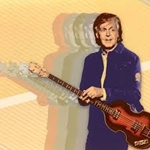
Paul McCartney is a people person. He initially resisted the Beatles’ permanent retreat to the studio, and on the eve of the band’s breakup, suggested they return to the road. (He had to settle for the roof.) In the decades since then, he’s rarely stayed off the stage for extended stretches. In recent years, he’s only picked up the pace, touring eight times (and totaling 310 shows) in the decade preceding the end of the “Freshen Up” odyssey that was supposed to extend into this year. His serial monogamy extends to his band too: His current touring (and sometimes recording) group, a four-person unit that coalesced in 2002, has lasted nearly as long as the Beatles and Wings combined. (One of its members has been by his side since 1989.) McCartney is constantly sighted on buses and subways. He goes on talk shows, calls into radio programs, and sits for features in magazines, obligingly “revealing” time after time that he sometimes dreams of John and George.
Source: Ben Lindbergh/theringer.com
details
Sean Lennon has come to Twitter to defend his mother, Yoko Ono, and to counter what he sees as the wrong idea about his late dad, John Lennon.
Sean is such a lovely guy, and I don’t blame him for putting the record straight. He also calls Paul McCartney’s “McCartney III” an instant classic.
Most importantly he says of his parents: “I’ve never seen two people have more love and respect for each other than my parents.”
It’s 2020, I can’t believe anyone is questioning John and Yoko’s love. They were human beings, they separated at one point. John had a relationship with May Pang. But Yoko deserves our respect. She’s also 87, and frail. Sean also deserves our respect as he cares for her.
Source: Showbiz 411
details